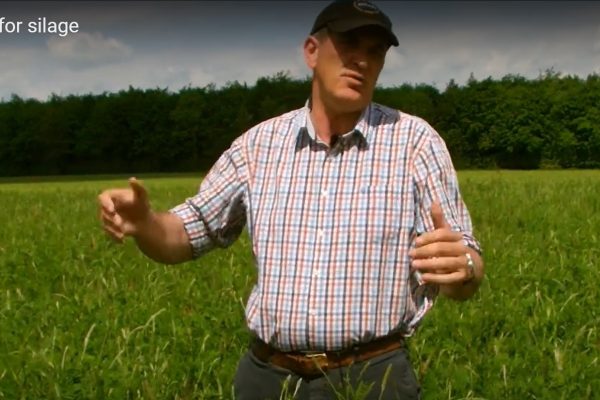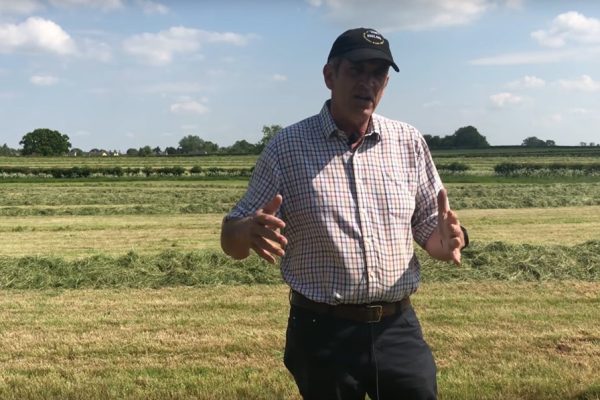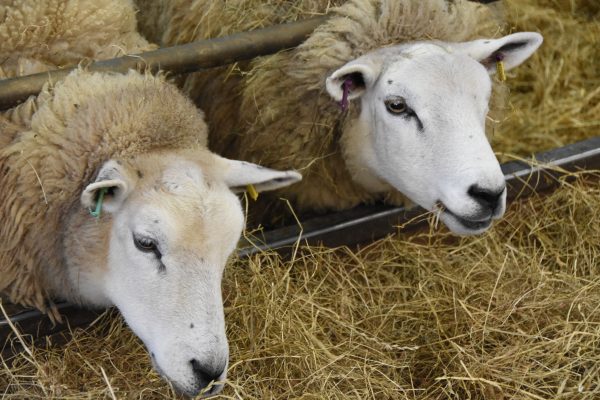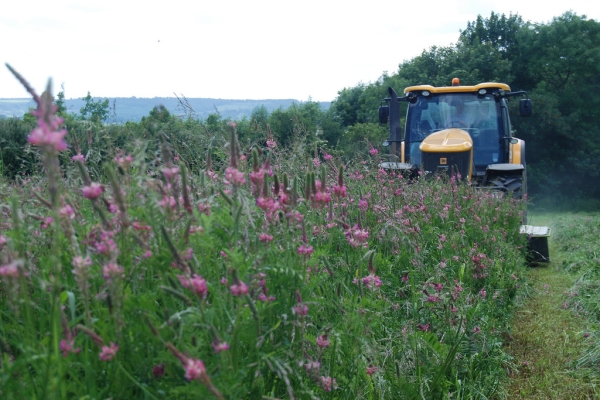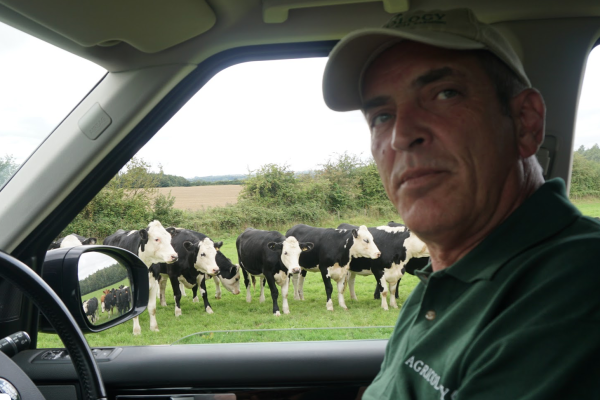Harvesting sainfoin
- Richard Smith shows the sainfoin crop being mown at Daylesford Organic farm – a follow on from his previous video blogs.
- Mowing has been delayed due to the wet weather, in perfect conditions it would have been cut about a fortnight earlier (mid-June) whilst in mid-flower.
- Despite the conditions, there is a fantastic crop – a mixture of sainfoin and native grasses – it should yield 15 tonnes per acre of fresh weight silage (or 37.5 tonnes per hectare).
- Sainfoin is mown quite high – as a ‘crown grown’ plant you should avoid cutting it too low so the plant can recover quickly. This makes it possible to get a second cut in September.
- Alternatively you can leave it to grow and harvest the seed in mid to late September. Sainfoin combines easily and a good crop will yield 150 kg per acre of good seed.
- Last week we held the first Agricology Open Day, it was a great event thanks to all those who came along. Keep following our news and blog for details of the next one!
The information contained above reflects the views of the author/s and does not necessarily reflect that of Agricology and its partners.
Related articles
Richard Smith (Farm Manager at Daylesford Organic Farm) gives an update on the nutritional analysis that was carried out on a juvenile sainfoin crop.
Richard Smith talks us through the establishment of his sainfoin crop at Daylesford organic farm, Gloucestershire, in this May video blog.
In our April video blog Richard is making ground preparations for the establishment of sainfoin, his favourite forage legume, at Daylesford organic farm.
In this June video blog, Richard Smith discusses Sainfoin, reducing anthelmintic use and the recent Agricology Open Day at Daylesford.
In our first Agricology video blog Richard Smith, the Steering Group Chairman, introduces us to the dairy herd he manages at Daylesford Organic Farm.
In this July video blog, Richard Smith gives viewers an insight into the harvesting of his sainfoin crop at Daylesford Organic Farm.
This month Richard explains the process of making sainfoin silage at Daylesford. He describes how the crop is mown and stored in the silage pit.
Richard Smith (Farm Manager at Daylesford Organic Farm) discusses everything sainfoin in this August video blog.
In this month's Agricology vlog, Richard Smith, Senior Farm Manager at Daylesford Organic Farm, discusses the production of grass silage in an organic system.
An overview and reflection on the 2016 Agricology Open Day by Daylesford Head Stockman Phil Gordon-Jones.
Tegan Darch shares her research exploring which plant species should be included in grassland pastures to best provide different nutrients to livestock.
In January's Agricology vlog, Richard Smith of Daylesford Farm discusses the forage he uses to feed his flock of commercial Lleyn Sheep.
Practical guidance on growing and using sainfoin and potential benefits for livestock, people and pollinators, based on science and practice.
Fascinating insights from scientists involved in the LegumePlus project; the reasons behind the research and what the research has revealed.
Richard Smith discusses how he is converting a conventional arable field into a grass and clover ley for livestock and the reasons for doing it.









